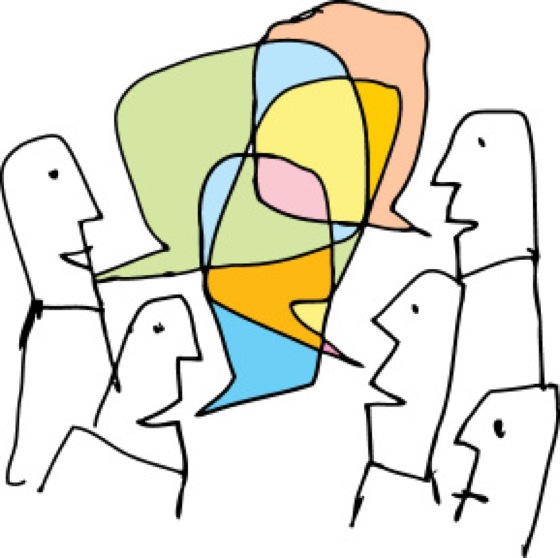
I know that getting kids to talk to each other about their art and the artwork of others is a powerful tool for learning, however, it was something that I felt I couldn’t manage very well. In my classroom, while some students enthusiastically talked over everyone in the group, others refused to speak or even look at anyone else. Sometimes students talked endlessly about anything but their art, and other times, the class just erupted into chaos that was hard to come back from. Eventually I realized that while I had been teaching students everything they needed to know about art, I wasn’t giving them the basic strategies needed for purposeful conversation.
Through some work presented by a Kennedy Center teaching artist, Eric Johnson, I have adapted some simple ways to make conversation a cornerstone in the art classroom. There are two key steps to setting up a positive environment for communication: setting up a consistent conversation sequence and setting consistent expectations.
Setting up a consistent conversation sequence allows students to build their conversation skills gradually. Here’s what you do.
Consistent Conversation Sequence
- Give students time to think on their own: This allows students some individual processing time. Less confident students can develop their thoughts more completely, rather than just relying on their more confident peers.
- Have students talk with a partner: If students are kept in pairs, rather than larger groups, no one is off the hook. Talking with one other person is less intimidating than sharing with a group.
- Have students talk in a small group or whole group: By this time, students have had time to build their thoughts and ideas and bounce them off each other. This is a wholly optional step, as you may have already met your instructional needs.
In addition to helping students feel more comfortable having discussions with one another, putting the following five Consistent Expectations into place when facilitating conversations will help create dynamic classroom discussions.
Consistent Expectations
- Set a clear task: By giving your students an explicit talking point (come up with a headline, compare/contrast, etc) you can focus their discussion. By just asking students to, “talk about” a topic, you give them an excuse to opt out.
- Build conversation norms: Sometimes kids don’t possess even the basic skills of talking with one another in a productive way. Model what conversations look like: eye contact, listening and contributing, respecting differing viewpoints, building the conversation and moving it forward.
- Limit time: A short time limit keeps the focus where it belongs, on the topic. As your students get better at adhering to norms, you can extend the time to allow deeper thoughts.
- Make students accountable: Walk around and really listen to what your students are saying. Ask students to share their talking points with you or paraphrase what their partners’ opinions were.
- Acknowledge by thanking: Always thank you students for their input and time spent thinking and sharing. When we praise students’ contributions, rather than a “correct” answer, we set the tone for learning in our classrooms.
By setting these conversation norms, over time, we were able to turn crazy conversation time into a powerful tool for developing critical thinking. My students were now reacting thoughtfully to artist choices and really thinking about the choices they made in their own work.
So tell us, how do you give students a voice in your classroom?
What struggles do you have during group discussion time?
Magazine articles and podcasts are opinions of professional education contributors and do not necessarily represent the position of the Art of Education University (AOEU) or its academic offerings. Contributors use terms in the way they are most often talked about in the scope of their educational experiences.




